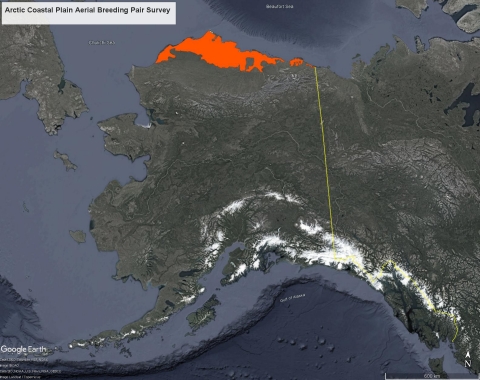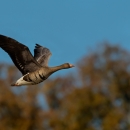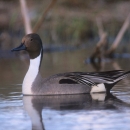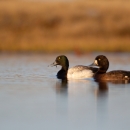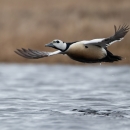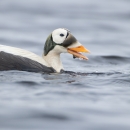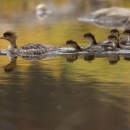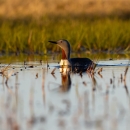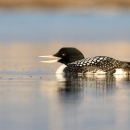States
AlaskaEcosystem
Coastal, Rural, Tundra, WetlandThe Arctic Coastal Plain (ACP) is a vast area of Arctic lowland tundra in far northern Alaska that serves as an important region for many species of breeding birds, especially waterbirds. Importantly, it is the only regularly used breeding area in North America for threatened Steller’s eiders (Polysticta stelleri), and one of only three breeding areas for the threatened Spectacled eider (Somateria fischeri). The ACP hosts many other waterbird species of conservation concern, including Red-throated (Gavia stellata) and Yellow-billed loons (G. adamsii), Snow geese (Anser caerulescens), Pacific black brant (Branta bernicla nigricans), Common eiders (S. mollissima), White-winged scoters (Melanitta deglandi), and Long-tailed ducks (Clangula hyemalis). The ACP Aerial Breeding Pair Survey has been conducted since 1986 and provides data on the distribution, abundance, and trend of 33 bird species (including 29 waterbird species) that nest in northern Alaska. Prior to 2007, two surveys with different timing and coverage were used to monitor waterbirds on the ACP. In 2007, the two historical surveys were merged and the current amalgamated survey has been flown annually since 2007 (except in 2020 and 2021). Results from this survey provide population status and distribution information to the Pacific Flyway Council, the Alaska Migratory Bird Co-Management Council, Spectacled and Steller’s Eider Recovery Teams (for assessing eider status relative to recovery criteria), U.S. Fish and Wildlife Service and Bureau of Land Management (for Endangered Species Act and National Environmental Policy Act impacts analyses and permitting), U.S. Geological Survey, North Slope Borough, various NGO’s, consulting firms, and industry.
Wilson, H.M., Safine, D.E., Frost, C.J., and E.E. Osnas. 2025. Population indices, trends, and distribution of breeding waterbirds on the Arctic Coastal Plain, Alaska, 2007-2024. Anchorage, Alaska: U.S. Fish and Wildlife Service, Migratory Bird Management. https://doi.org/10.7944/dqf4-2z27



